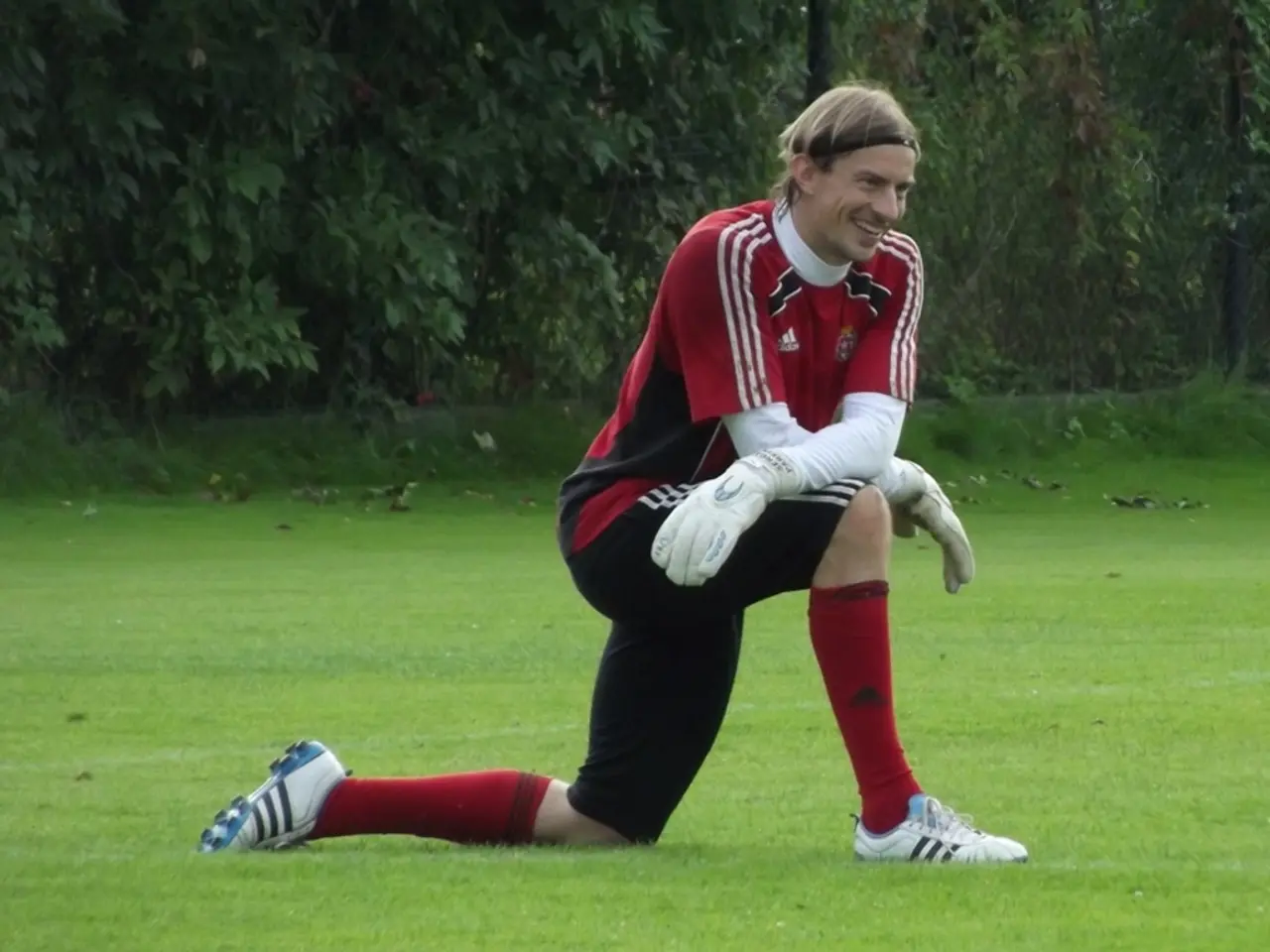Gout and plantar fasciitis: An examination of shared traits and distinct characteristics
Gout and plantar fasciitis are two common conditions that affect the feet, causing pain and discomfort. While they share some similarities, they have distinct causes and treatments.
Gout is a type of arthritis that commonly starts in the big toe but can also affect other joints in the body. It is characterised by pain, swelling, and inflammation. On the other hand, plantar fasciitis causes pain and swelling in the arch of the foot and heel. This condition is an inflammation of the plantar fascia, a ligament that runs along the bottom of the foot from the heel to the start of the toes.
Both conditions can be diagnosed through physical examinations and imaging tests. For gout, doctors may use blood tests and fluid samples, while X-rays might be used to diagnose plantar fasciitis.
The treatment for a gout flare typically includes NSAIDs, colchicine, ice application, fluid intake management, stress reduction, and contacting a doctor. Long-term management involves corticosteroids, xanthine oxidase inhibitors, uricosuric agents, uricase, allopurinol, febuxostat, pegloticase, weight management, low impact activities, alcohol limitation, purine-rich food limitation, and medication adjustments. The goal is to manage acute inflammatory flares, prevent future episodes, and lower serum urate levels.
Plantar fasciitis treatment, however, focuses on relieving inflammation and pain caused by overuse or mechanical strain of the plantar fascia. Initial treatment may involve NSAIDs for pain relief, ice application, and gentle exercises. For chronic or more severe cases, shockwave therapy, corticosteroid injections, a temporary walking cast, splint use during sleep, physical therapy, gastrocnemius release surgery (in severe cases), and addressing tension in the Achilles tendon might be necessary.
In contrast to gout, there is no pharmacologic treatment to alter the underlying cause of plantar fasciitis beyond symptom relief and biomechanical correction. Instead, treatment centres on physical therapy, orthotic devices to support the foot, and conservative approaches to reduce inflammation and promote healing.
In summary, gout treatment combines anti-inflammatory drugs for flare control with urate-lowering therapy for long-term prevention, whereas plantar fasciitis treatment relies mainly on symptomatic relief, physical rehabilitation, and biomechanical support.
It's important to note that plantar fasciitis is common in athletes and may recur. Symptoms of plantar fasciitis will improve in 9-12 months for most people, and around 5-10% of cases may require surgery to release the plantar fascia.
If you are experiencing persistent pain in your feet, it's essential to seek medical advice to receive an accurate diagnosis and appropriate treatment.
- Other joint pain, like gout, can also be a symptom of chronic conditions such as obesity, depression, bipolar disorder, and macular degeneration.
- AQ science has made significant strides in understanding and managing various health-and-wellness related medical-conditions, including gout and plantar fasciitis.
- While gout can lead to otherpain in the foot, it can also cause dryness and degeneration in other joints, potentially leading to migraines.
- Plantar fasciitis, on the other hand, is often associated with flat feet and may co-occur with other chronic diseases like obesity.
- In addition to treating plantar fasciitis, it's crucial to manage other pain and potential complications, as the condition may increase the risk of developing other health problems.
- Predictive models can help identify individuals with a higher risk of developing either gout or plantar fasciitis based on various factors such as age, sex, family history, and lifestyle.
- It's recommended to maintain a healthy lifestyle to prevent the onset of gout, which includes weight management, low impact activities, and limiting alcohol and purine-rich foods.
- For those struggling with chronic pain from gout or plantar fasciitis, it may be beneficial to explore complementary therapies such as acupuncture or yoga in addition to traditional medical treatment.
- Although there's no known cure for gout, successful long-term management can significantly improve quality of life and prevent debilitating complications.




